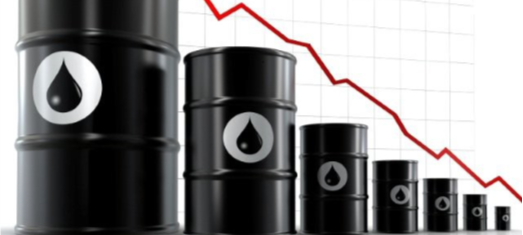
|

|

|

|

Oil Prices Have Been Cut in Half Since the Beginning of the Year Including a 25% Drop Last Friday
(Note: companies that
could be impacted by the content of this article are listed at the base of the
story [desktop version]. This article uses third-party references to provide a
bullish, bearish, and balanced point of view; sources are listed after the
Balanced section.)
West Texas Intermediate (WTI) oil prices ended 2019 on an up note soaring above $60 per barrel. Then the virus hit. Since then, oil prices have crashed. At first, they drifted slowly lower into the forties. But on Friday, the bottom fell out when OPEC and Russia failed to agree to a production cut, and Saudi Arabia signaled it might ramp up production. WTI prices fell $10.15 per barrel, or 24.59%, marking the second-biggest one-day decline on record and the largest since 1991. Ali Khedery of Dragoman Ventures thinks prices could go to $20 due to a supply glut, a sentiment echoed by Goldman Sachs analysts.
The International Energy Agency believes global demand will be reduced by 2.5 million barrels/day in the first quarter due to the virus. China alone represents 1.8 mb/d year over year. OPEC had recommended a cut in production of 1.5 mb/d heading into last Thursday’s meeting, which would have offset much of the impact of the virus. Instead, the meeting ended without a cut in production. Importantly, previously agreed production levels are set to expire at the end of the month. Many believe Saudi Arabia will increase its current production of 9.7 mb/d. Saudi Arabia has the capacity to produce 12.5 mb/d.
Needless to say, oil prices in the thirties would be disastrous for domestic energy companies. Many companies claim to be able to break even at oil prices in the forties. However, none claim to be able to do so at prices in the twenties. We have said in the past that U.S. producers have become the producers on margin. They will be the first to react to changes in oil prices by adjusting drilling. We expect the response for U.S. producers to be quick with drilling coming to a virtual stand still. The United States has grown to become the largest producer of oil at 11 mb/d. It has done so through the use of horizontal drilling and fracking that accelerates initial production rates. These techniques, however, also lead to sharper declines if new wells are not drilled. Without new drilling, U.S. production could slip back towards the 6 mb/day level of just ten years ago.
What is most disturbing about the recent drop in oil prices is that the market does not view the drop as temporary. Looking at future month contracts, prices rise very slowly and don’t cross back above $40 until almost 2022. That means that the market believes Saudi Arabia is not bluffing about raising production and that OPEC and Russia won’t reach an agreement to cut production. It also means the market does not believe that there will be a quick supply response by U.S. producers.
U.S. producers can withstand temporary dips into the forties, thirties or even twenties. Many hedged part of their production when oil prices rose last year. Two years of oil prices below $40 would be another story. Companies have operating and financial costs to consider. Companies that have tapped their lines of credit could see that credit reduced or eliminated leaving management with few options now that energy stock prices have fallen. Without an improvement in oil prices, many U.S. producers could be headed towards bankruptcy at a rate similar to what happened in 2016.
Investors would be wise to focus energy investment towards companies with little to no debt. A large hedge position may provide a lifeline. Low lifting costs per barrel remain important. A supportive ownership group with a long investment timeframe is also important.
Suggested Reading:
Are
Oil Markets Overreacting to the Spread of Coronavirus?
Canadian Producer Is
Growing Through The Drill Bit, Even In a Low-Price Environment
Sources
https://www.cnbc.com/2020/03/08/oil-plummets-30percent-as-opec-deal-failure-sparks-price-war-fears.html, Pippa Stevens, CNBC, March 8, 2020
https://www.iea.org/reports/oil-market-report-march-2020, International Energy Agency, March 8, 2020
https://www.wsj.com/articles/u-s-shale-drillers-could-be-casualties-of-oil-price-war-11583769768, Collin Eaton and Rebecca Elliott, Wall Street Journal, March 9, 2020
https://www.marketwatch.com/story/why-us-shale-oil-producers-are-at-the-heart-of-the-saudi-russia-price-war-2020-03-09, William Watts, MarketWatch, March 9, 2020